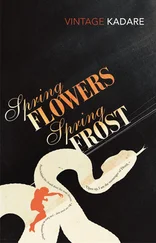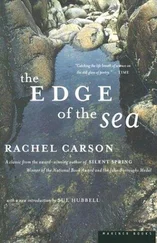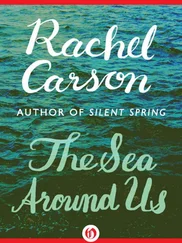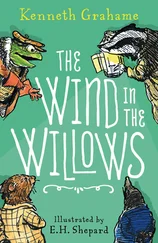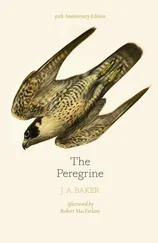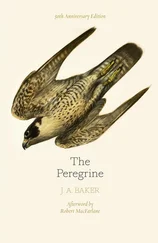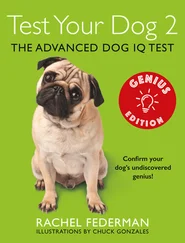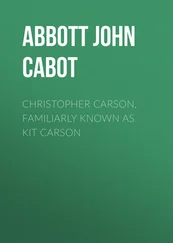The poison may also be passed on from mother to offspring. Insecticide residues have been recovered from human milk in samples tested by Food and Drug Administration scientists. This means that the breast-fed human infant is receiving small but regular additions to the load of toxic chemicals building up in his body. It is by no means his first exposure, however: there is good reason to believe this begins while he is still in the womb. In experimental animals the chlorinated hydrocarbon insecticides freely cross the barrier of the placenta, the traditional protective shield between the embryo and harmful substances in the mother’s body. While the quantities so received by human infants would normally be small, they are not unimportant because children are more susceptible to poisoning than adults. This situation also means that today the average individual almost certainly starts life with the first deposit of the growing load of chemicals his body will be required to carry thenceforth.
All these facts—storage at even low levels, subsequent accumulation, and occurrence of liver damage at levels that may easily occur in normal diets, caused Food and Drug Administration scientists to declare as early as 1950 that it is “extremely likely the potential hazard of DDT has been underestimated.” There has been no such parallel situation in medical history. No one yet knows what the ultimate consequences may be.
Chlordane, another chlorinated hydrocarbon, has all these unpleasant attributes of DDT plus a few that are peculiarly its own. Its residues are long persistent in soil, on foodstuffs, or on surfaces to which it may be applied. Chlordane makes use of all available portals to enter the body. It may be absorbed through the skin, may be breathed in as a spray or dust, and of course is absorbed from the digestive tract if residues are swallowed. Like all other chlorinated hydrocarbons, its deposits build up in the body in cumulative fashion. A diet containing such a small amount of chlordane as 2.5 parts per million may eventually lead to storage of 75 parts per million in the fat of experimental animals.
So experienced a pharmacologist as Dr. Lehman has described chlordane in 1950 as “one of the most toxic of insecticides—anyone handling it could be poisoned.” Judging by the carefree liberality with which dusts for lawn treatments by suburbanites are laced with chlordane, this warning has not been taken to heart. The fact that the suburbanite is not instantly stricken has little meaning, for the toxins may sleep long in his body, to become manifest months or years later in an obscure disorder almost impossible to trace to its origins. On the other hand, death may strike quickly. One victim who accidentally spilled a 25 per cent industrial solution on the skin developed symptoms of poisoning within 40 minutes and died before medical help could be obtained. No reliance can be placed on receiving advance warning which might allow treatment to be had in time.
Heptachlor, one of the constituents of chlordane, is marketed as a separate formulation. It has a particularly high capacity for storage in fat. If the diet contains as little as Mo of 1 part per million there will be measurable amounts of heptachlor in the body. It also has the curious ability to undergo change into a chemically distinct substance known as heptachlor epoxide. It does this in soil and in the tissues of both plants and animals. Tests on birds indicate that the epoxide that results from this change is more toxic than the original chemical, which in turn is four times as toxic as chlordane.
As long ago as the mid-1930’s a special group of hydrocarbons, the chlorinated naphthalenes, was found to cause hepatitis, and also a rare and almost invariably fatal liver disease in persons subjected to occupational exposure. They have led to illness and death of workers in electrical industries; and more recently, in agriculture, they have been considered a cause of a mysterious and usually fatal disease of cattle. In view of these antecedents, it is not surprising that three of the insecticides that are related to this group are among the most violently poisonous of all the hydrocarbons. These are dieldrin, aldrin, and endrin.
Dieldrin, named for a German chemist, Diels, is about 5 times as toxic as DDT when swallowed but 40 times as toxic when absorbed through the skin in solution. It is notorious for striking quickly and with terrible effect at the nervous system, sending the victims into convulsions. Persons thus poisoned recover so slowly as to indicate chronic effects. As with other chlorinated hydrocarbons, these long-term effects include severe damage to the liver. The long duration of its residues and the effective insecticidal action make dieldrin one of the most used insecticides today, despite the appalling destruction of wildlife that has followed its use. As tested on quail and pheasants, it has proved to be about 40 to 50 times as toxic as DDT.
There are vast gaps in our knowledge of how dieldrin is stored or distributed in the body, or excreted, for the chemists’ ingenuity in devising insecticides has long ago outrun biological knowledge of the way these poisons affect the living organism. However, there is every indication of long storage in the human body, where deposits may lie dormant like a slumbering volcano, only to flare up in periods of physiological stress when the body draws upon its fat reserves. Much of what we do know has been learned through hard experience in the antimalarial campaigns carried out by the World Health Organization. As soon as dieldrin was substituted for DDT in malaria-control work (because the malaria mosquitoes had become resistant to DDT), cases of poisoning among the spraymen began to occur. The seizures were severe—from half to all (varying in the different programs) of the men affected went into convulsions and several died. Some had convulsions as long as four months after the last exposure.
Aldrin is a somewhat mysterious substance, for although it exists as a separate entity it bears the relation of alter ego to dieldrin. When carrots are taken from a bed treated with aldrin they are found to contain residues of dieldrin. This change occurs in living tissues and also in soil. Such alchemistic transformations have led to many erroneous reports, for if a chemist, knowing aldrin has been applied, tests for it he will be deceived into thinking all residues have been dissipated. The residues are there, but they are dieldrin and this requires a different test.
Like dieldrin, aldrin is extremely toxic. It produces degenerative changes in the liver and kidneys. A quantity the size of an aspirin tablet is enough to kill more than 400 quail. Many cases of human poisonings are on record, most of them in connection with industrial handling.
Aldrin, like most of this group of insecticides, projects a menacing shadow into the future, the shadow of sterility. Pheasants fed quantities too small to kill them nevertheless laid few eggs, and the chicks that hatched soon died. The effect is not confined to birds. Rats exposed to aldrin had fewer pregnancies and their young were sickly and short-lived. Puppies born of treated mothers died within three days. By one means or another, the new generations suffer for the poisoning of their parents. No one knows whether the same effect will be seen in human beings, yet this chemical has been sprayed from airplanes over suburban areas and farmlands.
Endrin is the most toxic of all the chlorinated hydrocarbons. Although chemically rather closely related to dieldrin, a little twist in its molecular structure makes it 5 times as poisonous. It makes the progenitor of all this group of insecticides, DDT, seem by comparison almost harmless. It is 15 times as poisonous as DDT to mammals, 30 times as poisonous to fish, and about 300 times as poisonous to some birds.
Читать дальше


